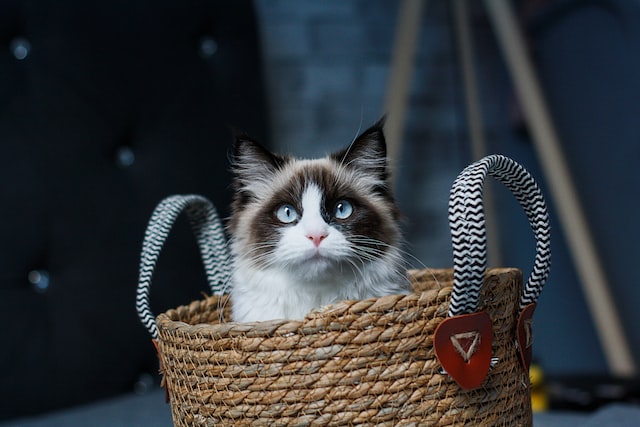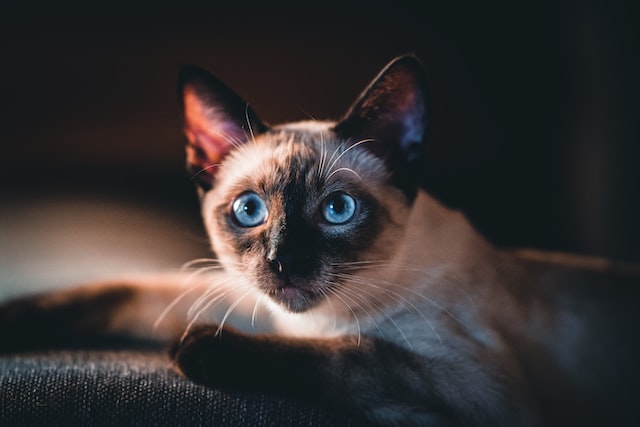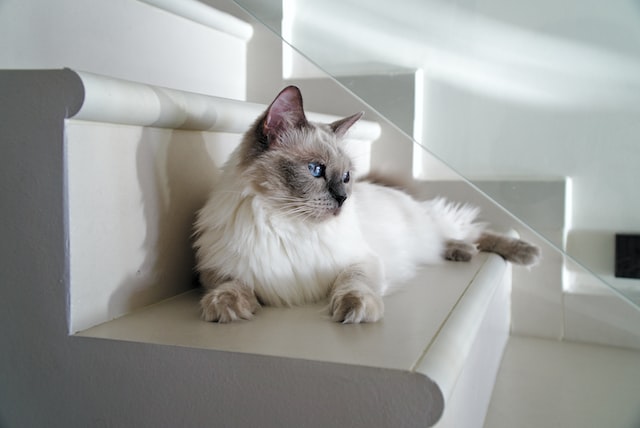Ragdolls are among the most loving and friendly domestic cat breeds worldwide. But you might wonder if that holds for love and affection for other cats and dogs.
The answer is yes, which is good news. Ragdolls are very open and friendly cats that love other pets, especially other cats and dogs, as long as they are family. However, if a Ragdoll is a guest animal that isn’t usually part of the family, it might be a little standoffish.
The truth is that Ragdolls are just good with families. Siberian cats and Ragamuffins come in a close second and third place. Ragdolls are one of the most friendly and accepting breeds of cats. They are also the least territorial.
Ragdolls don’t mark off their personal space with a line. Of course, the female Ragdoll can sometimes be different. Still, it’s not a fiercely territorial cat at all, and it’s only slightly more annoyed by strangers than a male Ragdoll, which is almost nothing.
Ragdoll Cats and Dogs
Ragdoll cats don’t mind living in a house with dogs as their main friends. Of course, there are some exceptions, but most have to do with the dog, not the Ragdoll.
For example, a high-strung, fiercely territorial dog like a Chihuahua could be a problem because they are the exact opposite of a Ragdoll. They will fight with tiny teeth and nails over a small bowl of dog food that the Ragdoll probably doesn’t even want.
So the rule is only sometimes true. Most of the time, however, Ragdolls will get along with almost any other dog.
- Ragdolls get along with everyone
- They have pleasant personalities
- Ragdolls act like dogs
- They are large and durable
Ragdolls are one of the friendlier breeds of domestic cats, and they will play and meet a dog without being scared. Of course, they trust a lot, which can put them in danger, especially if they get out of the house, but it’s a great trait for a home environment.
Ragdolls also act like dogs, which can help a dog with behavior problems. As the dog and Ragdoll get used to each other, the cat will show more affection and play with the dog.
Ragdolls are also big for cats. Adult males can weigh up to 20 pounds.
They are strong cats that can handle the rougher games that big dogs sometimes play. Since most big dogs are “gentle giants,” a Ragdoll might get along best with one of these dogs.
Are Ragdoll cats good with dogs?
Ragdoll cats are the best breed to bring into a home with an existent dog because of their mild temperament and dog-like behavioral features. These cats are frequently referred to as “puppy cats.” Despite their unique species, Ragdolls and dogs have a lot in common, which may lead to a lovely canine-feline friendship.
Best Dog Breeds for Ragdolls
Even though most dogs and Ragdolls get along well, a few dog breeds are especially good with Ragdolls.
- Beagles
- Pugs
- Golden Retrievers
- Black Labradors
- Great Danes
- Irish Wolfhounds
- Bull Mastiffs
- Saint Bernards
Beagles and pugs are the same size as Ragdolls, whether male or female and are not typically hyperactive canines. They get along well with Ragdolls since they are frequently just as relaxed back.
Golden Retrievers and Black Labradors are more lively but easy-going, friendly, and open dogs that would get along well with Ragdolls and make excellent companions.
The dog breed giants are Great Danes, Irish Wolfhounds, Saint Bernards, and Bull Mastiffs. They are gentle giants, though, and would make an excellent, loyal, and consistent partner in a Ragdoll.
What are the benefits of having both a Ragdoll cat and a dog?
Research shows that having a pet is beneficial to your health. Pet owners tend to be happier than people who don’t have pets, and they also tend to live longer. Having multiple pets is good for your physical health because it makes you more likely to be active. Having more than one pet is also good for your mental health.
Your pets are always there to love you, and they can also make you feel less anxious and sorrowful.
When you have more than one pet, they can help to keep each other entertained and active. Pets not only encourage their owners to be more active, but they also do the same for each other. For example, when dog and cat get along, they like to play, cuddle, and relax and are happy to share their toys.
In addition to getting exercise, they also benefit from the mental stimulation their peers give them. This is a significant benefit for people who have busy schedules and pets.
Having more than one pet might be a good idea if you have kids. Your kids will learn the responsibility that comes with having more than one pet, and they will also learn about the different needs of each type of pet. The best part is that animals give children companionship and love that doesn’t depend on anything from them.
Ragdolls and Other Cats
Ragdolls are not territorial, although most catfights are for territory. Also, turf is only sometimes defined by an area. Turf may be anything, including food, drink, human interaction, a preferred location for leisure, a cat scratching post, a cat home, etc.
As with dogs, it is not the Ragdoll that will determine the nature of the bond, but rather the cat that is the Ragdoll’s counterpart. Ragdolls have no territorial ambitions and will get along with practically any other cat as long as that cat is also friendly.
Since their personalities are similar, you must be a little pickier when picking a cat partner for your Ragdoll, regardless of whether you own a male or female Ragdoll.
Male Ragdoll kittens are more aggressive than adult males, yet this aggressiveness is fun and not predatory or cruel. Youthful female Ragdolls are somewhat more aloof and far less aggressive than their male counterparts.
Best Cat Breeds for Ragdolls
If you’re looking for a friend for your Ragdoll, you should think about this because your Ragdoll’s age and gender may make all the difference with the other cat. But like dogs, Ragdolls get along with most cats, though some cats are better with them than others.
- Maine Coon Cat
- Siberian Cats
- Ragamuffins
- Another Ragdoll
- Persian Cats
- Birman Cats
Coon cats are another large domestic breed that is loving, clever, and kind to humans and other animals. They get along with Ragdolls since they share many characteristics, such as their size compared to a male Ragdoll.
Siberians have a similar temperament, demeanor, and behavior to Ragdolls and Ragamuffins and are one of the breeds noted for getting along well with them. The same is true of Persians and Birmans.
Lengthy-haired Persians are noted for their wonderfully placid temperament and long coats. However, they are stunning once they achieve maturity. They get along well with Ragdolls because of their similar temperaments.
Birmans resemble Ragdolls in many aspects of their behavior and disposition. The Birman is an exceptionally clever, peaceful, and friendly cat, making it the ideal companion for a Ragdoll.
Ragamuffins are almost Ragdolls since they are descended from the Ragdoll lineage that broke off a few generations ago due to the Ragdoll’s severe breeding restrictions. However, they have preserved a significant amount of their close cousin’s disposition and get along well with Ragdolls.
The easiest method to locate a Ragdoll friend is to return to the source, another Ragdoll! Ragdolls get along well with one another, arguably better than any other cat breed.
It’s very convenient to possess two Ragdolls since you know precisely what you’ll receive with the second one. In addition, there is no need to be concerned about receiving two guys or two females as this breed is not very territorial.
Avoid the most territorial breeds with other cats whenever possible, as this trait is not characteristic of the Ragdoll. In addition, it will be challenging to comprehend why the other cat is so agitated. A Ragdoll is far too laid-back for such antics.
Conclusion
Ragdoll cats get along well with dogs. They are sometimes called “puppy cats” because their demeanor and temperament are more like that of an enthusiastic puppy than a typical cat.
Because Ragdolls get along so well with other animals, they are one of the finest breeds to consider if you already have a dog.
However, although Ragdoll cats are typically good with dogs, this must be evaluated on a case-by-case basis, and you must exercise caution when first introducing your new cat to your dog.
You must be gentle with both dogs as you gradually assist them in adjusting to living in the same place. It may take many weeks to a few months for your dogs to feel entirely comfortable in each other’s presence, so don’t be discouraged if it takes longer than you planned.
If you are sure that you want to bring a Ragdoll home to live with your dog, be sure you are prepared for the additional responsibility and expenditures that come with owning several pets.
Regardless of these exceptions, if your dogs can cohabit peacefully in your house, you and your family will be rewarded with twice as much unconditional affection.









